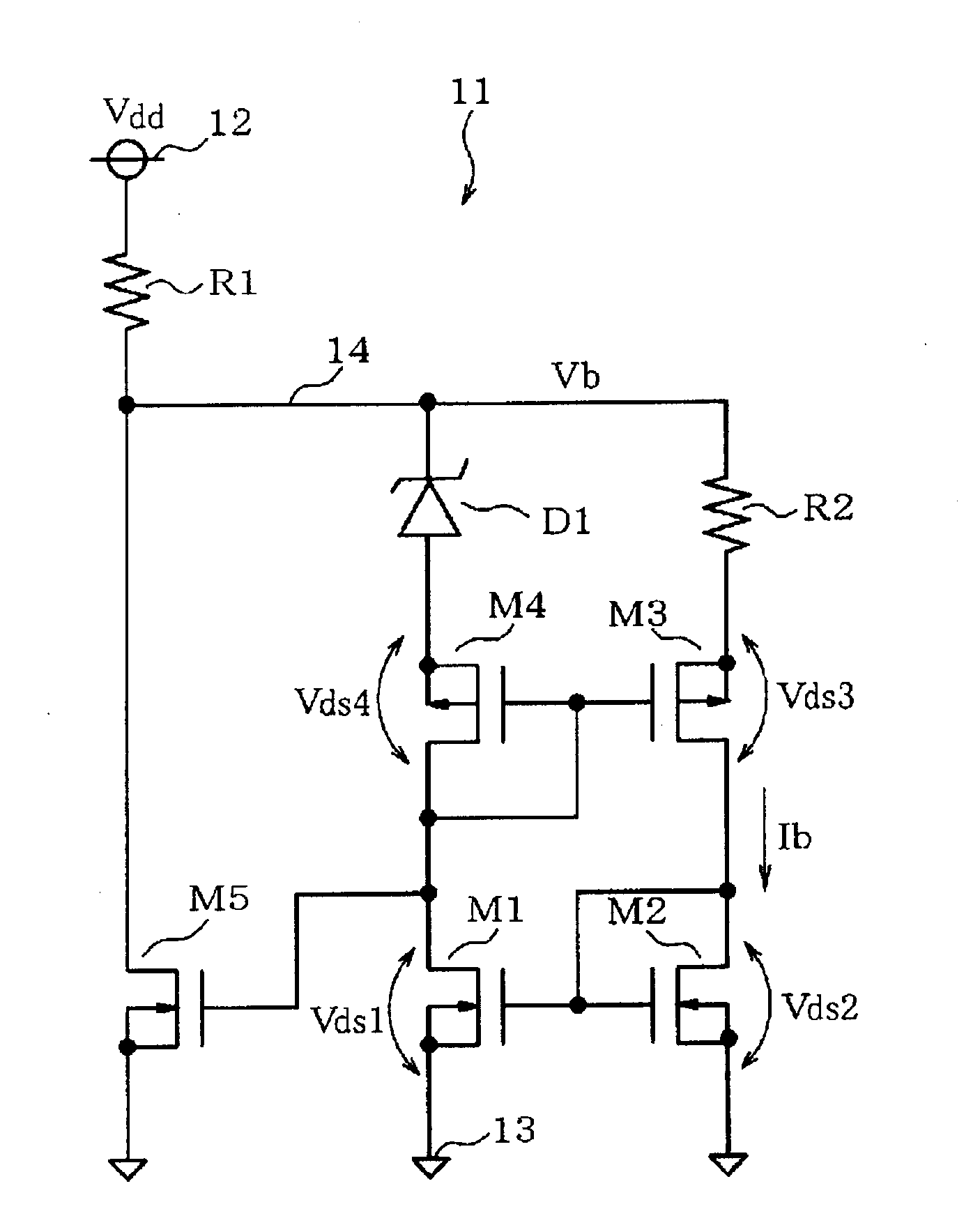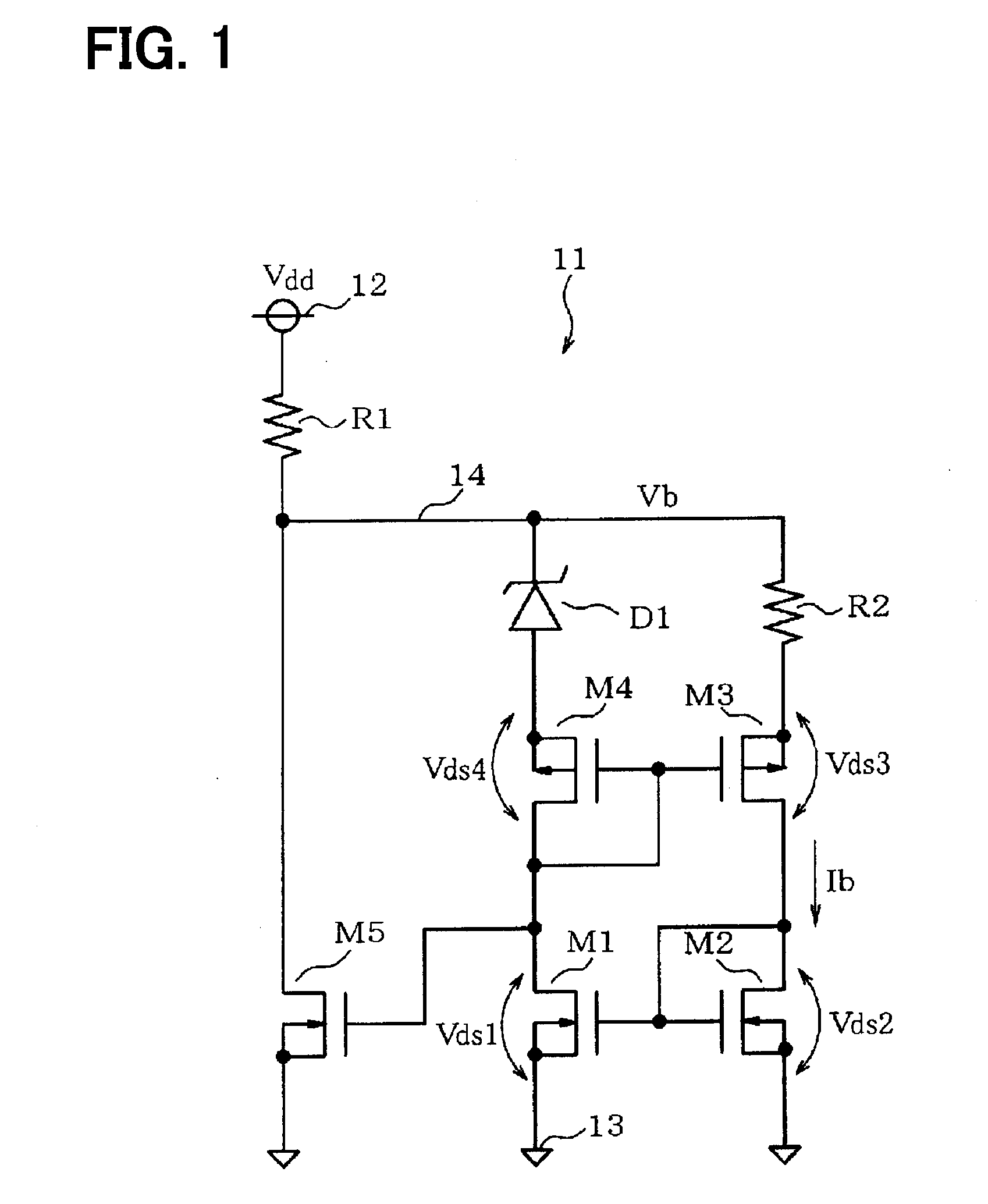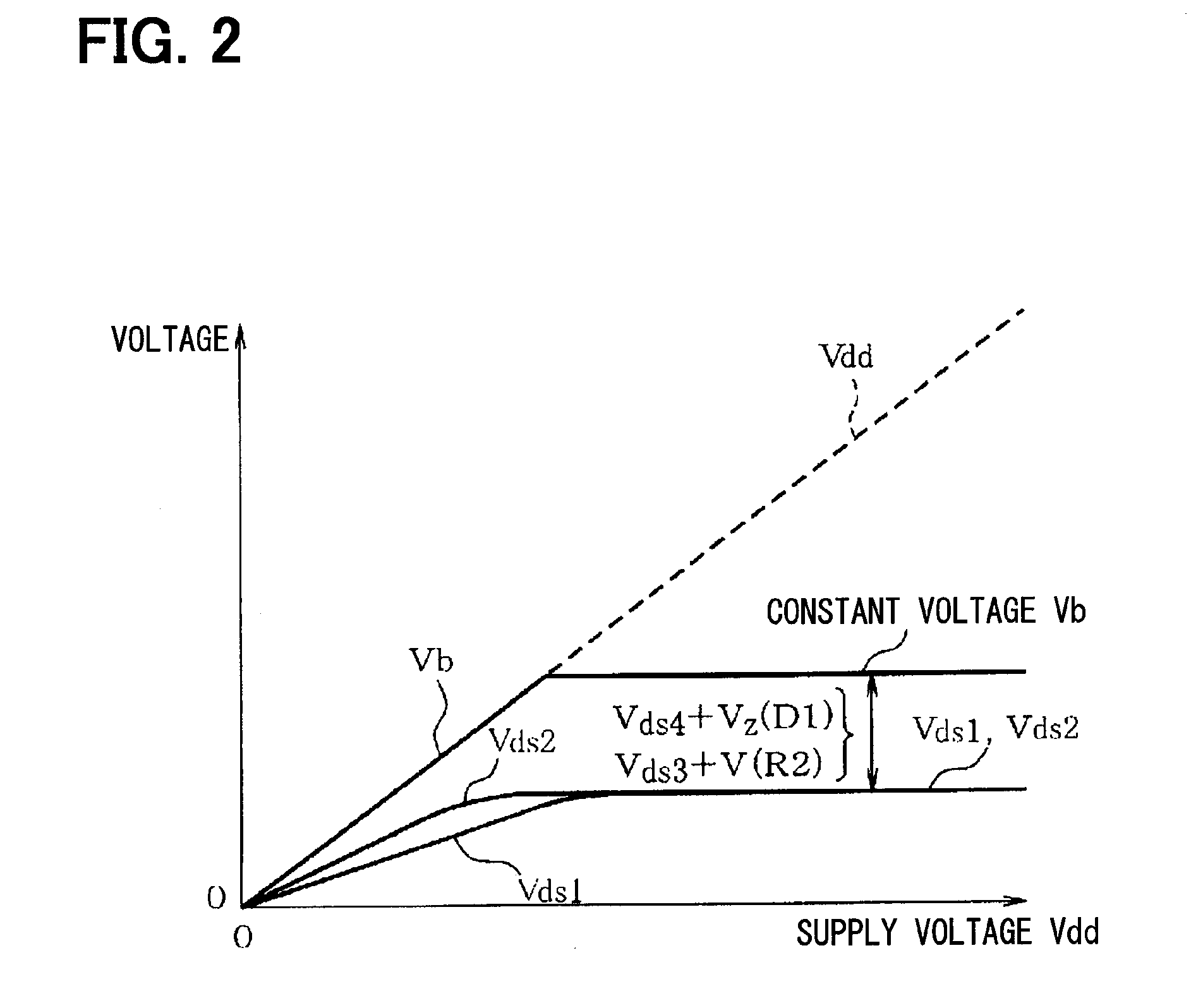Constant current-constant voltage circuit
a constant current and voltage circuit technology, applied in the direction of electric variable regulation, process and machine control, instruments, etc., can solve the problems of increased cost and poor input stability, and achieve the effects of reducing the rise of drain-to-source voltage, reducing the amount of input voltage, and low resistance voltage elements
- Summary
- Abstract
- Description
- Claims
- Application Information
AI Technical Summary
Benefits of technology
Problems solved by technology
Method used
Image
Examples
first embodiment
[0021]With reference to FIG. 1 and FIG. 2, a first embodiment of the present disclosure will be explained. A constant current-constant voltage circuit 11 illustrated in FIG. 1 is used for an electronic control apparatus mounted to a hybrid vehicle or an electric vehicle that run by driving a motor by the power supplied from a power drive battery. Between a first power source line 12 and a second power source line 13 (a ground line), a supply voltage Vdd of about 200V to 300V is applied from the battery.
[0022]The constant current-constant voltage circuit 11 generates a constant voltage Vb at an intermediate node 14 having an intermediate potential of the first power source line 12 and the second power source line 13, and flows a constant drain current Ib (also referred to as a constant current Ib) through a second transistor M2. A first resistor R1 is coupled between the first power source line 12 and the intermediate node 14. Between the intermediate node 14 and the second power sou...
second embodiment
[0035]A second embodiment is explained with reference to FIG. 3. A constant current-constant voltage circuit 21 is different from the constant current-constant voltage circuit 11 illustrated in FIG. 1 in that a Zener diode D2 is included between the intermediate node 14 and the drain of the fifth transistor M5. Other configuration is the same. The Zener diode D2 corresponds to a second constant voltage element according to the present disclosure. In the constant current-constant voltage circuit 11, the highest constant voltage Vb is applied to the fifth transistor M5 among the transistors M1-M5. According to the present embodiment, the drain-to-source voltage of the fifth transistor M5 decreases by the Zener voltage Vz (D2) of the Zener diode D2. Therefore, it may be possible to further reduce the element withstand voltage of the fifth transistor M5. In addition, it may be possible to obtain the same operation and effect as those in the first embodiment.
third embodiment
[0036]A third embodiment is explained with reference to FIG. 4. Instead of including the second resistor R2 and the Zener diode D1 between the intermediate node 14 and the transistors M3 and M4, a constant current-constant voltage circuit 31 includes the second resistor R2 and the Zener diode D1 between the sources of the transistors M2 and M1, and the second power source line 13. Furthermore, in order to equalize the source potential of the first transistor M1 and the source potential of the fifth transistor M5, a Zener diode D3 is coupled between the source of the fifth transistor M5 and the second power source line 13. Other configurations are the same as the constant current-constant voltage circuit 11 illustrated in FIG. 1. The Zener diode D3 corresponds to the third constant voltage element according to the present disclosure.
[0037]Since the threshold voltages of the transistors M1, M2, and M5 are mutually equal, it is only necessary to set the Zener voltages of the Zener diod...
PUM
 Login to View More
Login to View More Abstract
Description
Claims
Application Information
 Login to View More
Login to View More - R&D
- Intellectual Property
- Life Sciences
- Materials
- Tech Scout
- Unparalleled Data Quality
- Higher Quality Content
- 60% Fewer Hallucinations
Browse by: Latest US Patents, China's latest patents, Technical Efficacy Thesaurus, Application Domain, Technology Topic, Popular Technical Reports.
© 2025 PatSnap. All rights reserved.Legal|Privacy policy|Modern Slavery Act Transparency Statement|Sitemap|About US| Contact US: help@patsnap.com



